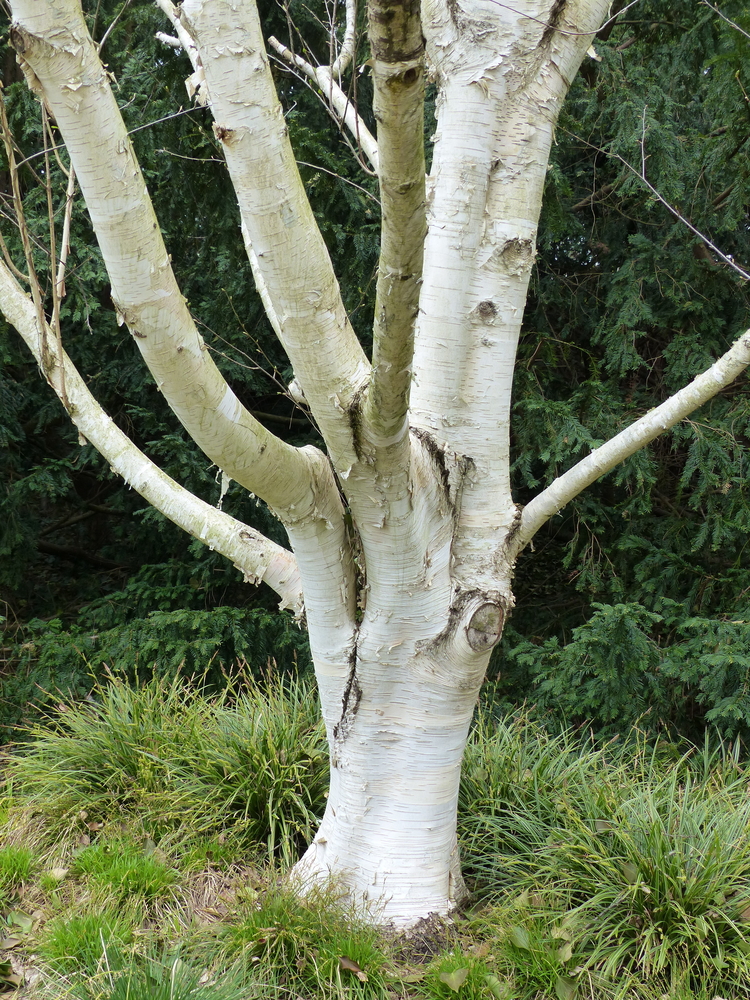Attractive Tree Bark? Check Out The Diversity !!
If you were to ask a child to describe what tree bark looks like, you would get a variety of descriptions given to you. They might include “Brown”, “Rough”, “Grey”, “Nobbly”, etc., etc.. And in the main it would be easy to understand why they had chosen those descriptions.
….
However, there are some trees and shrubs out there that do not fit those rather dull images of how bark can sometimes appear.

Take this for example. This wonderful vertical striped bark can be seen on a group of trees commonly referred to as the ‘Snake Bark Maples’. Members of the genus Acer, popular species are Acer capillipes, Acer rufinerve, Acer davidii and Acer pensylvanicum. Occasionally in private gardens for those who are maybe enthusiasts, and more commonly in arboretums around the country.

Or maybe this tree. Here we are looking at Acer griseum, the Paper Bark Maple. As you can see, it sheds its bark. However, if you are cunning and plant it in such a position that at the point of viewing the sun is behind it, it is then something to behold. The papery bark ‘lights up’ when viewed in that way, and it is a memorable site.

We are all used to seeing the common Silver Birch – Betula pendula, the well known ‘Pioneer’ tree. It is a very common native , especially on ‘Commons’ alongside Gorse, Heather and Bracken, and is amongst the first trees to establish itself on newly formed soils. But this is a more ornamental Birch Tree, Betula utilis, the Himalayan Birch. As the photo shows quite well, the white bark clearly defines even the shape of the branches and twigs. Particularly if planted in front of an evergreen or darker backdrop.

This brightly coloured bark is that of a particular Willow – Salix alba ‘Vittelina’. Whilst it’s new growth appears with this golden bark, it quickly ‘dulls’ with maturity. However, an effective way to keep that really bright colour is to cut it right back to a framework in late spring, and it will spend all summer putting on a huge amount of shoots which will surprise you by the intensity of their colour once the winter sun lights them up.

This shiny ‘polished’ bark belongs to a species of Cherry Tree called the Tibetan Cherry – Prunus serrula. It really has to be see to be believed. But trust me, if you do come across one you will not be able to stop yourself from wanting to touch it. It’s polished bark extends from the trunk, right into the crown of the tree, and it is something very special to see.

Next up is the patterned bark of the London Plane Tree – Platanus x hispanica. This became a popular choice of street tree back in the day because of its ability to do well in the polluted air of big cities. The patterns that you can see arise because the bark randomly sheds, revealing fresh young bark underneath, helping it to ‘breath’. Looking remarkable like a Maple leaf to the untrained eye, the large ‘palmate’ leaf is glossy which also helps as city grime is washed off them when it rains. One peculiarity of the London Plane is that the leaf stalk is hollow at the point where it attaches to the tree. And this hollow stem protects the developing bud during its development, which only appears for the first time at leaf fall in the autumn.

